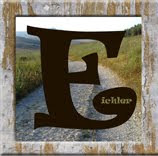As stated in the previous blog it is important to know why you are creating a PowerPoint presentation. Once you have decided the point of the presentation, who your audience will be, and if it is a live presentation or not, you are ready to begin creating the storyboard.
Storyboards are graphic organizers that allow you the opportunity to layout your presentation visually. For example, for each slide you would decide what information you need and ideas for chunking the material. The planning stage allows you an opportunity to think through the process.
There are many different ways to create a storyboard. You could hand draw and write a storyboard, you could use Word and create an outline, or you could use a template (there are many online). I have created my storyboard using PowerPoint which works well for my creative process.
In PowerPoint you have the option of using the Notes Pane at the bottom of the screen. This pane is useful for storing ideas and information you would like to share with your audience. I like to make notes about things that might be good to include, for example: videos, games, audience interaction, and so on.
When creating my storyboard, I am not worried about grammar or creating my source page correctly in the beginning. I use my source page as a place to store the websites, books, or articles I use so that I can go back and cite correctly later. 

After I worked through the process with my storyboard, I start adding details along with bells and whistles. It is important to remember, most adult attention spans are 20 minutes. To help improve on that, break your information into chunks and vary the activities during the presentation to keep the audience engaged. This can be done by telling a story, giving a demo, having audience participation, games, using manipulatives, music, video, animation, and so on.
In the next blog we will be looking at specific ways to use these varying techniques and how to incorporate them into your presentation to engage your audience.

This is really useful. I didn't even know there was a notes bar in PowerPoint! And I agree that you need to sketch out the message and the slides first before adding the detail. Looking forward to the next installment, Angie!
ReplyDeleteThanks - your my first comment. How exciting! I am really enjoying this.
Delete